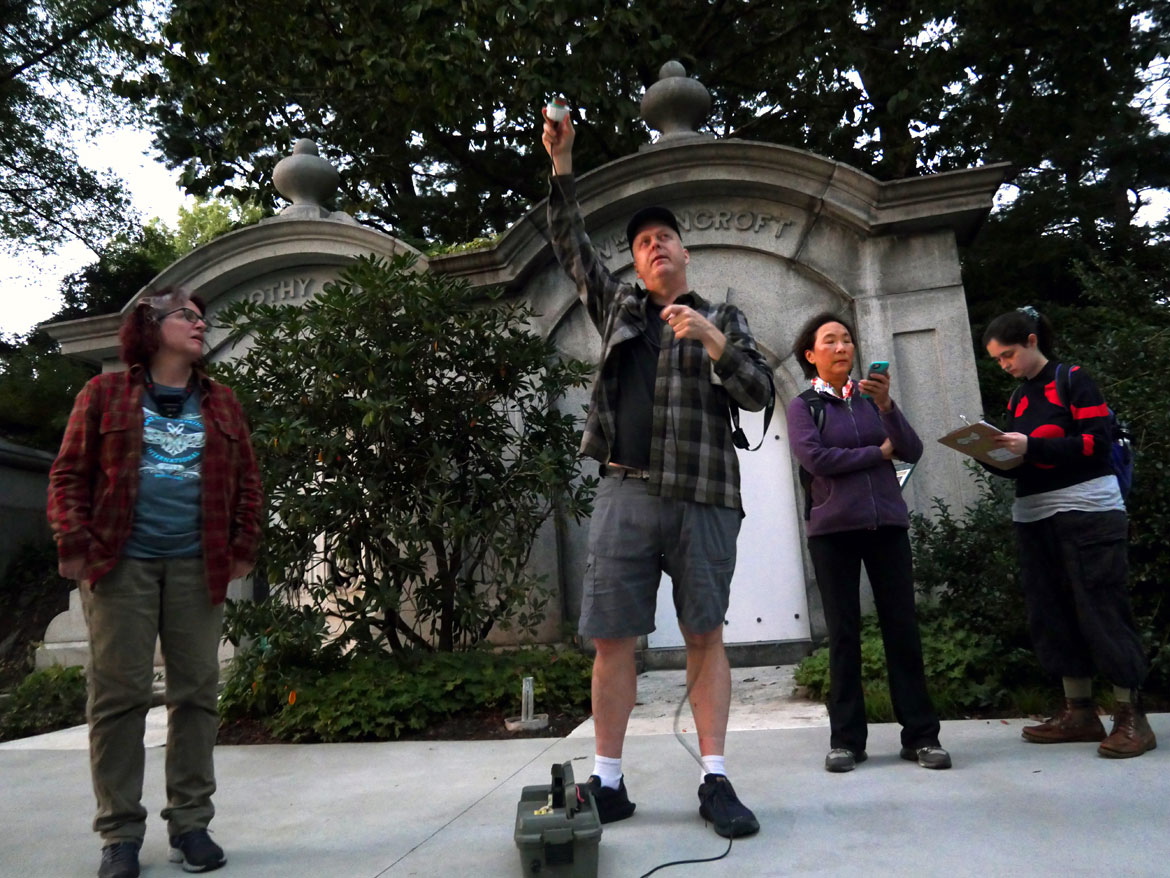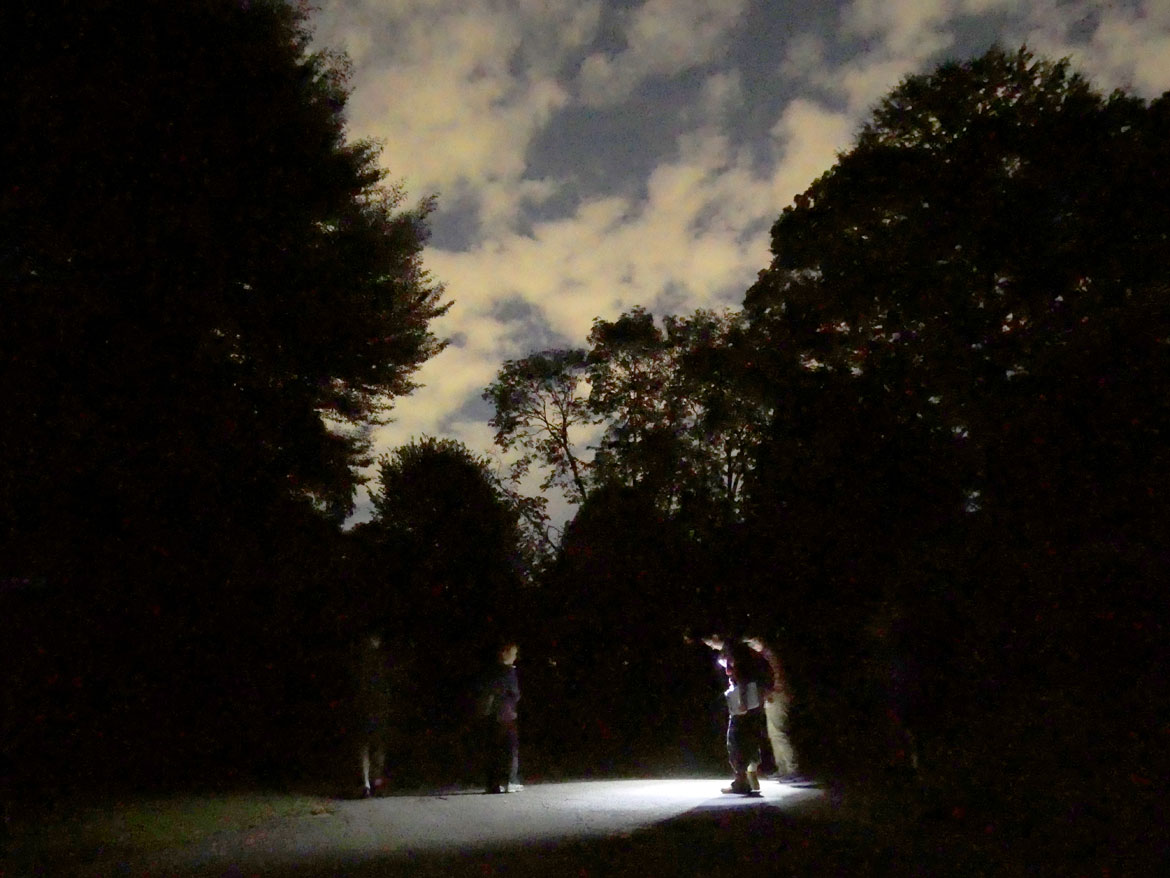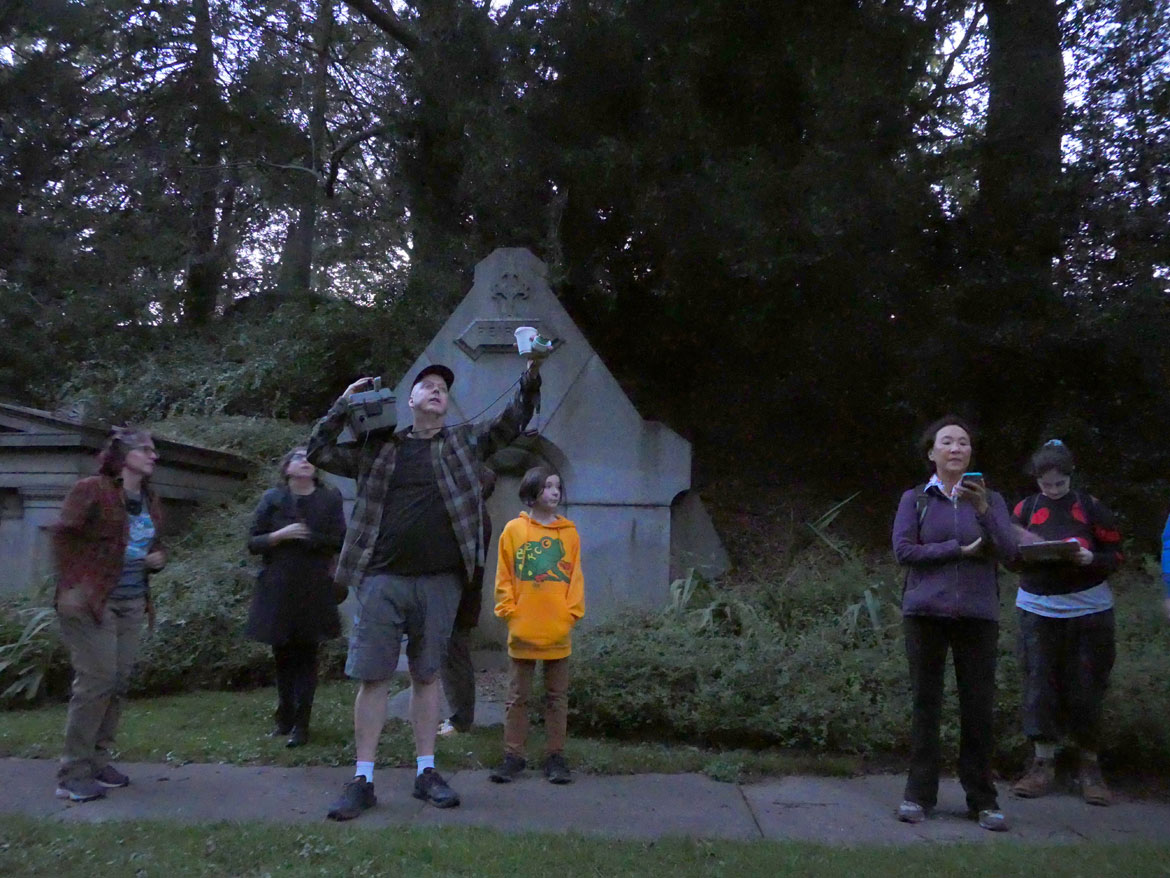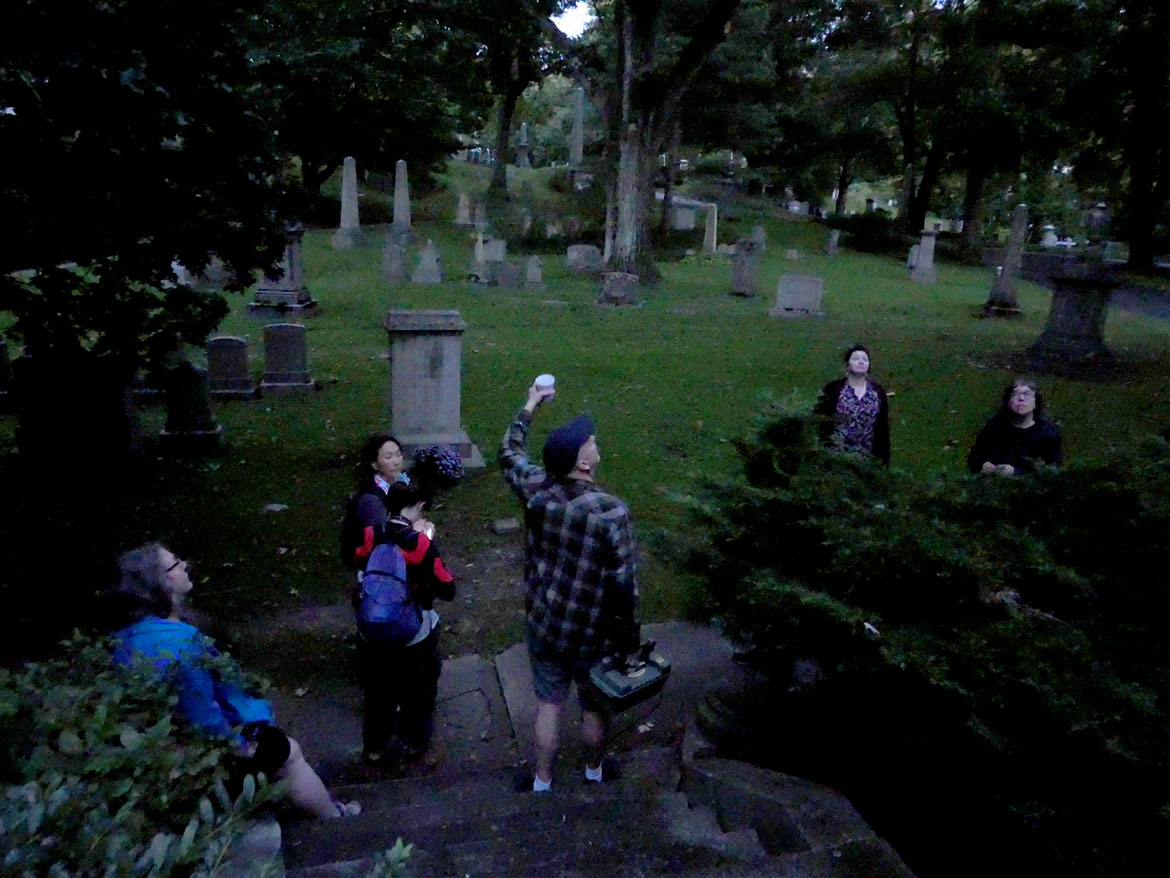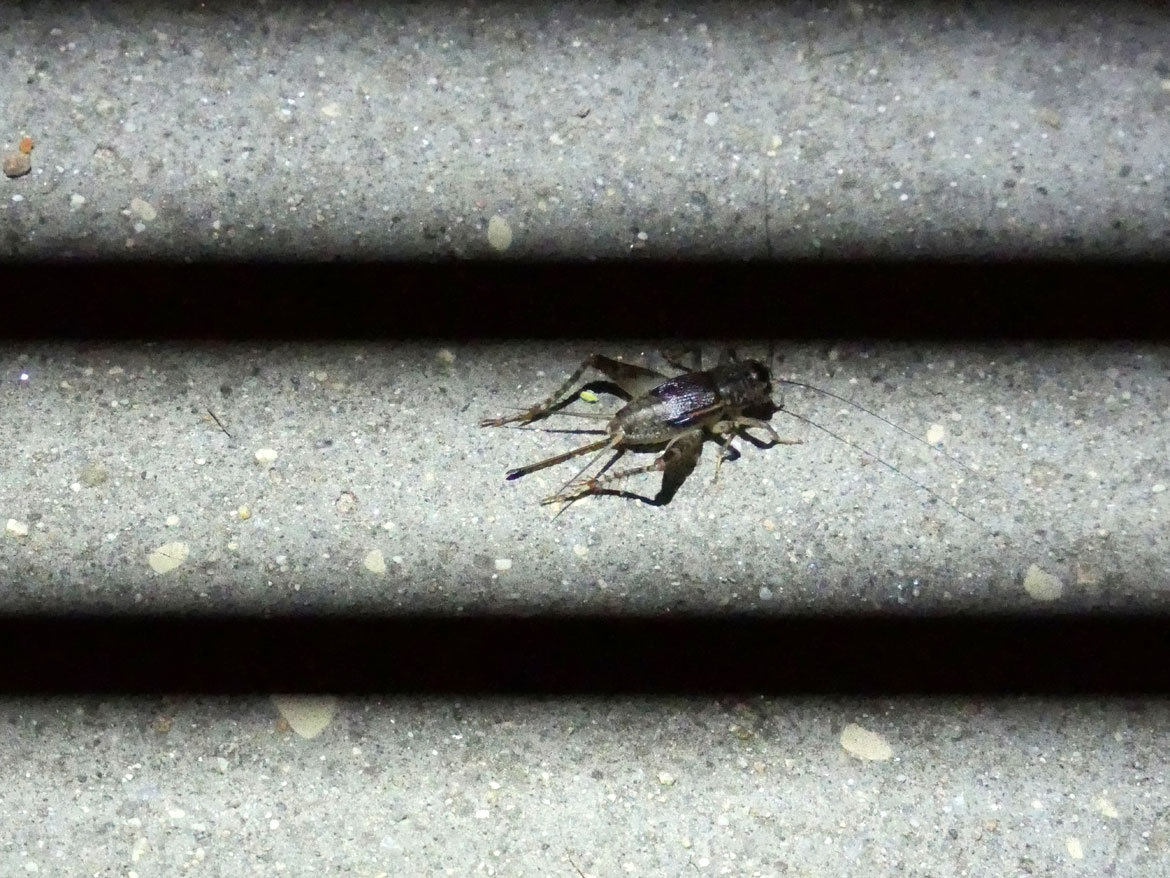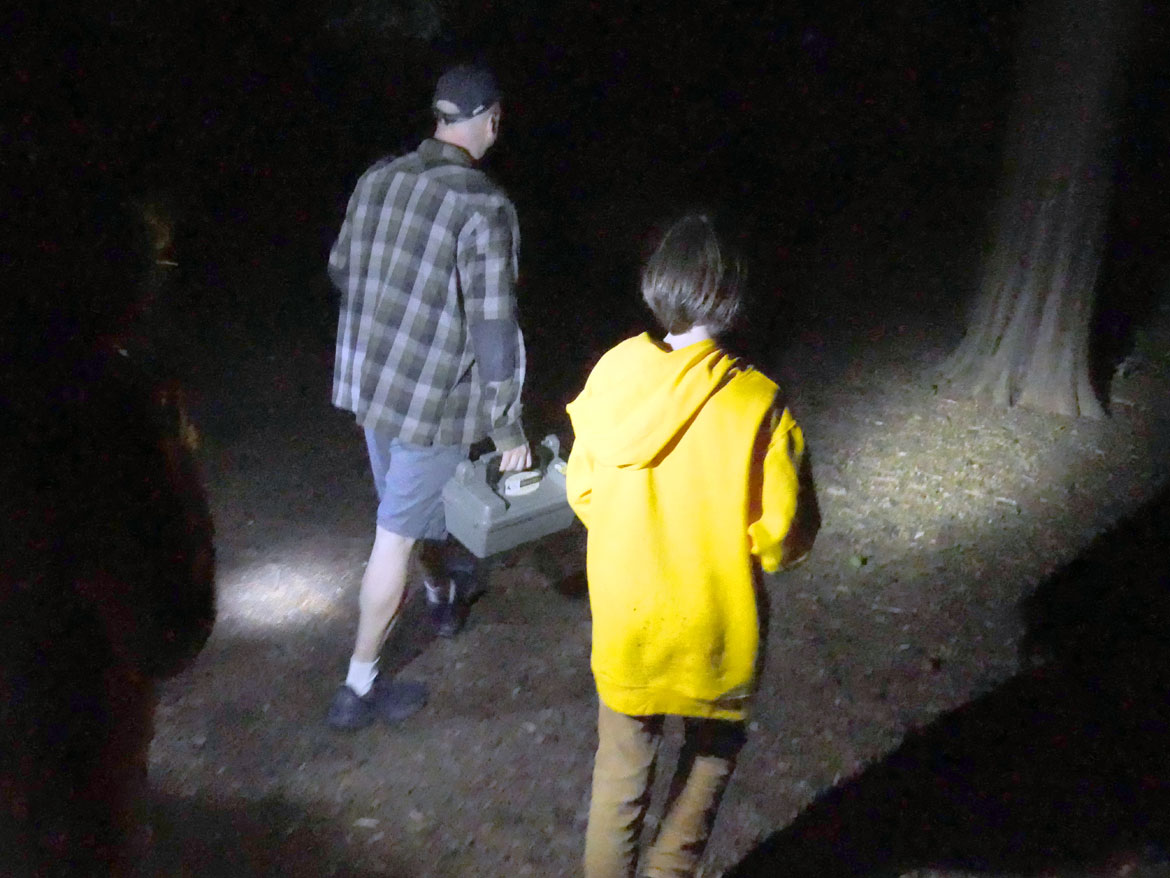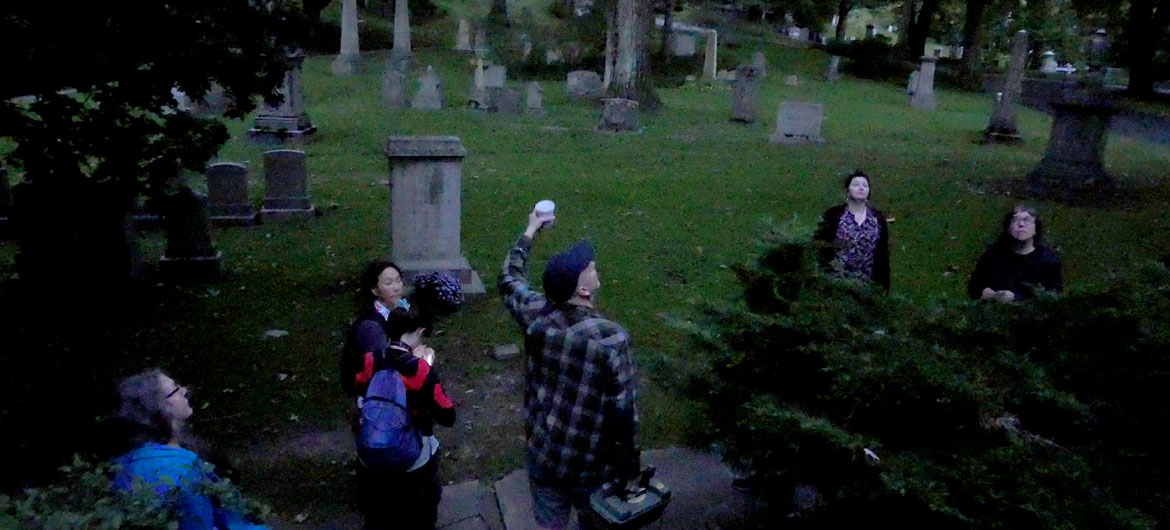The group of nine of us began looking and listening for bats at Cambridge’s Mount Auburn Cemetery as night fell last Wednesday evening. Christopher Richardson, a biology teacher at Tufts University and bat biologist at Boston University, held up the receiver of a sort of bat translator, basically an audio device that can detect calls bats make that people can’t usually hear and make them audible to humans.
Since 2017, this citizen scientist-naturalist project has been surveying the bats at Mount Auburn to consider cemeteries as potential bat refuges in cities. And they’re trying to figure out where bats raise their young here so they can advise the cemetery on what trees to leave be and perhaps create quiet areas to protect the bats.
As it got darker and darker, we hiked up and down the hills of the cemetery, stopping under the stately trees, along rows of quiet crypts, at the edges of still ponds for a minute at a time to record observations. At one point a great blue heron squawked as it took off from a pond and its lanky silhouette glided into the night sky.
Big brown bats are the most prevalent bats here, but they’ve also detected eastern red bats, hoary bats, and little brown myotis. And they’ve found bats here generally favor low lands (places with lower elevations), clear space under trees, and bodies of water, where they hunt insects.
If this is the kind of coverage of arts, cultures and activisms you appreciate, please support Wonderland by contributing to Wonderland on Patreon. And sign up for our free, occasional newsletter so that you don’t miss any of our reporting. (All content ©Greg Cook 2023 or the respective creators.)
